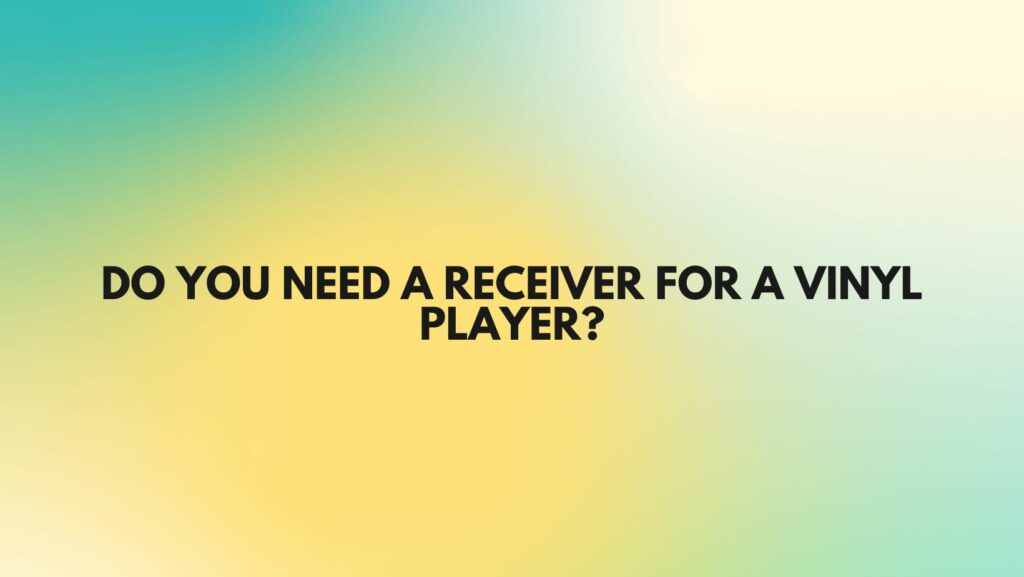Vinyl records have experienced a resurgence in popularity over the last decade, captivating audiophiles and music enthusiasts with their warm, analog sound. If you’re venturing into the world of vinyl, you might be wondering if you need a receiver to play your vinyl records. In this comprehensive guide, we will explore the role of a receiver in a vinyl playback system and help you decide whether or not it’s a necessary component for your setup.
Understanding a Vinyl Playback System
To answer the question of whether you need a receiver for your vinyl player, it’s important to understand the components that make up a vinyl playback system. These components include:
- Vinyl Player (Turntable): This is the device that plays your vinyl records. It consists of a platter, a tonearm, and a cartridge with a stylus.
- Phono Preamp: Also known as a phono stage or phono preamplifier, this component is essential for converting the low-level, high-impedance signal generated by the cartridge into a standard line-level signal suitable for amplification.
- Amplifier: An amplifier, also referred to as a preamplifier or integrated amplifier, is responsible for boosting the audio signal to a level suitable for driving speakers. It also allows you to adjust the volume and sometimes includes tone controls.
- Speakers: These are the devices that produce sound from the amplified signal generated by the amplifier.
Do You Need a Receiver for a Vinyl Player?
A receiver is essentially an integrated amplifier with built-in radio tuners and other audio processing features. In the context of vinyl playback, it is not a mandatory component, but it can be a convenient and versatile addition to your audio setup. Whether or not you need a receiver depends on your specific requirements and preferences:
- No, You Don’t Need a Receiver:
- If you have a turntable with a built-in phono preamp: Some modern turntables come equipped with a built-in phono preamp. In this case, you can connect your turntable directly to powered speakers or an active speaker system, eliminating the need for a separate amplifier or receiver.
- If you prefer a minimalist setup: For those who value simplicity and space-saving solutions, bypassing a receiver and connecting your turntable directly to powered speakers or an all-in-one audio system can be an attractive choice.
- Yes, You Might Want a Receiver:
- If you have passive speakers: Passive speakers require an external amplifier to produce sound. In this scenario, a receiver can serve as the integrated amplifier that powers your passive speakers, making it an essential component in your vinyl playback system.
- If you want to expand your audio setup: A receiver can provide additional flexibility by allowing you to connect multiple audio sources, including your turntable, CD player, radio, and streaming devices. It also offers more comprehensive control over audio settings, like tone adjustments and volume control.
- If you want to integrate radio or other audio sources: If you enjoy listening to AM/FM radio or have other audio sources like a CD player, a receiver with built-in tuners and multiple inputs can simplify your setup and offer a unified control center for your audio needs.
Conclusion
In summary, whether or not you need a receiver for your vinyl player depends on your individual preferences, the components in your audio setup, and your desire for added features and flexibility. If you have a turntable with a built-in phono preamp and prefer a minimalist setup, you can connect directly to powered speakers. However, if you have passive speakers or wish to integrate multiple audio sources while having control over various audio settings, a receiver can be a valuable addition to your vinyl playback system. Ultimately, the choice is yours, and it should be based on your specific audio needs and goals.


